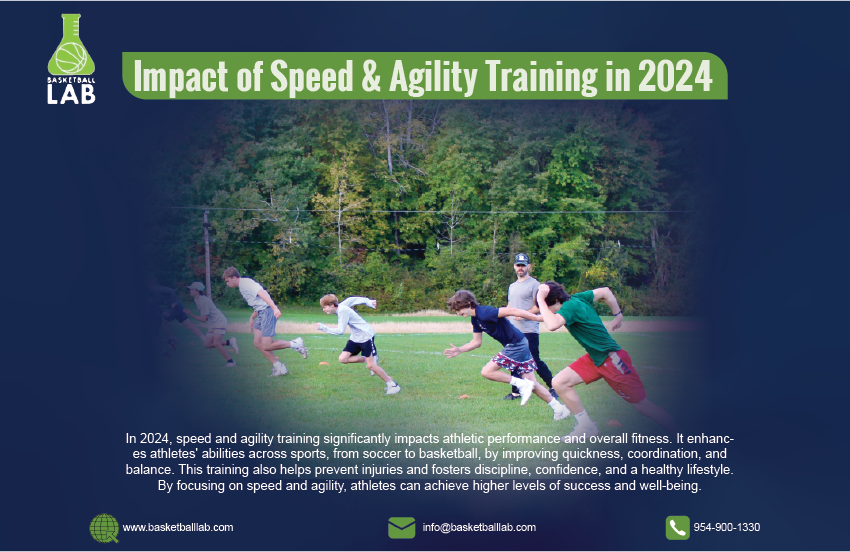Speed and agility training is a crucial factor in young athletes’ development and training in 2024. It is impossible to overlook its importance as sports become increasingly competitive. That’s the reason we have covered every aspect of speed and agility training, from its impact to benefits, dietary plans, and injury prevention associated with speed and agility training for youth athletes.

Impact of Speed and Agility Training in 2024
Technological improvements in 2024 have changed youth sports, increasing new training techniques. Speed and Agility Training is very popular. These are very important as they help with reflex development, coordination, and muscle growth, which are important in high-stakes matches. Using advanced technology in speed and agility training allows trainers to develop customized training programs for every athlete.

Benefits of Speed and Agility Training for Young Athletes
Some of the key benefits of speed and agility training are listed below:
- Enhanced Athleticism
It is invaluable for developing functional core strength, dynamic flexibility, control, and balance. Young athletes achieve a comprehensive athletic performance that benefits them when practicing different sports. - Improved Performance
Speed and agility training help athletes compete with their opponents efficiently. It also provides them a competitive edge in sports like football, basketball, soccer, etc. - Mental Toughness
During the speed and agility training exercises, the athletes are tested to the limit, fostering resilience and mental strength. This mental strength is something that any athlete could ever wish for, as they are trained to remain focused even when challenged. - Faster Recovery
Speed and agility exercises assist in toning muscles that take time to get back into shape after intensely hard workouts, minimizing downtime and keeping the athletes fit for games.

Dietary Plans for Agility Training Athletes
Proper nutrition is very important in speed and agility training since it can directly impact performance as well as help the body rebuild and repair tissue after exercise.
- Balanced Meals
A combination of some complex carbohydrates, some protein, and, of course, some healthy fats can do the magic, as carbohydrates are our vital source of energy, proteins build muscles, and finally, fats are our energy reservoirs. - Hydration
The athletes must stay more hydrated. Simply because water controls our body temperature and acts as a fluid for joints, it is vital for optimal physical activity. - Pre-Workout Snacks
Take a banana, whole-grain toast, or a glass of smoothie before training to boost your energy. - Post-Workout Nutrition
Taking in protein and carbohydrates after rigorous exercise training enables the body to restore the glycogen pool and rebuild the muscles. Chocolate milk or a protein shake, preferably accompanied by a piece of fruit, works well.

Role of Speed & Agility Training in Injury Prevention
Another valuable aspect of speed and agility training implemented into team practice is injury prevention. Prevention is better than cure; any young athlete should undergo critical training that will protect them from, any injuries that may terminate their sports career. The improved balance and strength found through agility reduce the risk of accidents or injury while enhancing overall performance.
- Correct Movement Patterns
Knowledge of the right technique of movements helps to minimize the chance of developing injuries like strains and sprains that are caused by movements that put undue force on muscles and tendons. Three things that athletes understand are how to speed up or slow down as well as how to be able to turn in different ways without necessarily incurring injuries. - Muscle Balance and Flexibility
The various movements incorporated in the speed and agility exercises help build balanced muscles and improve flexibility, which are vital in reducing the effects of injury. - Preparedness
Sportsmen who have undergone the process of conditioning are not likely to be prone to developing injuries that result from fatigue. They have much more muscular and robust structures that help them to withstand the strains of sports.



